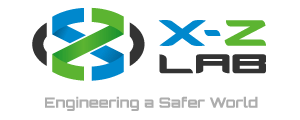Curious which medical procedures use radiation? As a part of their Speak Up™ patient safety initiative, The Joint Commission published an infographic on the different kinds of medical imaging tests available. The chart gives an overview of each test’s process and uses, as well as precautions patients should take. Full Chart Download
Read More
Advantages of Scanning Primates vs. Mice
Dr. Catharine Paddock’s article for Medical News Today, “PET scans can help select best TB drugs for trials,” reveals advantages of scanning primates versus mice due to similar disease profiles shared by human and primate. In a study led by the University of Pittsburgh School of Medicine, linezolid, a drug developed to treat extensively drug-resisistant tuberculosis (XDR-TB), was found to be effective in humans and macaques using PET/CT scans, although earlier studies on mice showed no effect. X-Z LAB’s small animal PET technology allows small animals as well as not-so-small animals to be scanned, thereby improving the preclinical process. The Trans-PET® BioCaliburn® occupies this niche
Read More
Radiation Dose Chart
Radiation dose is measured in sieverts (Sv), but how much radiation does one sievert actually represent? To put it into perspective, here is an infographic that visualizes the amount of radiation absorbed from different sources.
Read More
PET Advantages in Oncology
President of Radiological Technologies Universities, Brent D. Murphy, MS, DABR, underscores the efficacy of PET and champions increased utilization of PET in oncology. In the linked presentation, Dr. Murphy illustrates PET advantages in both sensitivity (the probability of a positive test, given that a patient is ill) and specificity (the probability of a negative test, given that a patient is well). The improvements discussed can apply to small-animal PET and preclinical scans, like the Trans-PET® BioCaliburn®. Download PDF
Read More
Performance Evaluation of the Trans-PET® BioCaliburn® LH System
Abstract The Trans-PET® BioCaliburn® LH is a commercial positron emission tomography (PET) system for animal imaging. The system offers a large transaxial field-of-view (FOV) of 13.0 cm to allow imaging of multiple rodents or larger animals. This paper evaluates and reports the performance characteristics of this system. Methods: in this paper, the system was evaluated for its spatial resolutions, sensitivity, scatter fraction, count rate performance and image quality in accordance with the National Electrical Manufacturers Association (NEMA) NU-4 2008 specification with modifications. Phantoms and animals not specified in the NEMA specification were also scanned to provide further demonstration of its
Read More
Basic Types of Radiation
From SciShow‘s miniseries IDTIMWYTIM (“I Don’t Think it Means What You Think it Means”), this fun video gives a basic overview of the different types of radiation beyond ionizing radiation and where they are found in real life.
Read More
